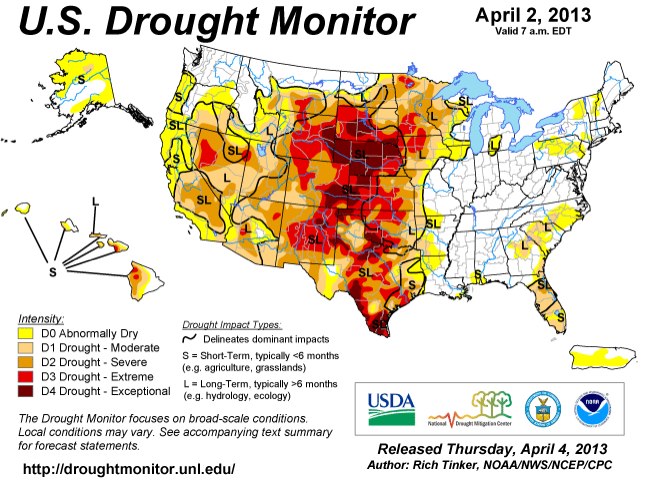
Ramit Plushnick-Masti,
Associated Press
SHORE ACRES, Texas — A city administrator looks out at the Gulf of Mexico from this Southeast Texas town, wondering what vicious hurricanes it may spawn. In the Panhandle, a farmer tries new techniques to keep soil from turning to dust. In West Texas, ranchers watch prairie grass die. Others grow algae as water becomes too salty for other crops. And statewide, reservoirs dry up.
Want to see what happens when the impacts of climate change are felt? Well, just look at Texas, some scientists say.
While Gov. Rick Perry disagrees with scientists who say global warming is at least partly caused by the human release of heat-trapping gases, state agencies are adapting to weather changes that have already brought a historic drought, higher temperatures and sea level rise that contributed to nearly unprecedented sea surge during a hurricane.
“Are we in a cycle … or is this something more permanent? I don’t think anyone knows for certain,” said Bob Avant, director of bioenergy programs at Texas A&M AgriLife Research Station in College Station. “But you have to prepare,” he said.

Americans nationwide are intermittently feeling the impacts of climate change, from longer, hotter summers to erratic, heavier downpours to milder winters and ice melt in Alaska, according to a draft report recently released by a federal climate commission. Now, Superstorm Sandy alongside a devastating drought in the Midwest and South has again turned attention to global warming.
Texas is somewhat unique, though, because it is grappling with all these issues at once.
“Texas really runs the gamut of climate. It has coastal, it has desert, and everything in between,” said Andrew Dessler, a Texas A&M University professor of atmospheric sciences who studies climate change.
The most devastating climate event to hit Texas so far was a historic drought in 2011 that cost the state $7.6 billion in agricultural losses. John Nielsen-Gammon, the state climatologist, said the dry stretch was exacerbated by temperatures that were on average nearly 5.5 degrees higher. He attributes some of that excess heat to global warming.
The drought — pegged as the worst one-year dry spell in state history — served as a wake-up call. Now, the Legislature is considering establishing a $2 billion revolving loan program as part of a plan to spend $27 billion on water infrastructure over the next half century. Farmers are testing new and different kinds of seeds and crops. Ranchers are buying cattle breeds that require less water. Coastal communities are rethinking development.
With Texas in a rush to adapt, it could help others understand what works and what doesn’t.
(Read the rest of this story at Chron.com)
RELATED STORIES:
• Weather service’s dated storm protection puts public at risk (Houston Chronicle)
• Getting Serious About a Texas-Size Drought (New York Times/Texas Tribune)
• Forecasters predict more drought and water problems for Texas (Texas Climate News)
LOCAL AREA HEADLINES:
- Nonprofit Invests Millions In Affordable Housing For Seniors (KUHF Public Radio)
- Littering In Houston Is A Million-Pound Problem (KUHF Public Radio)
- Shell Eco-Marathon challenges inventors (KPRC 2 News)
- Our Future: Bellaire Senior High student Allie Baumgarten (KHOU 11 News)
- Walgreen clinics expand care into chronic illness (KTRK 13 News)
- Conference offers advice and aid to grandparents raising grandchildren (KRIV 26 News)
- Body of homeless man found by city in load of trash (Chron.com)
- Critics, Supporters respond to proposed “tough love” welfare legislation (KRIV 26 News)
STATE HEADLINES:
- Battleground Medicaid: Democrats see opening in Perry’s resistance to expansion (Austin Statesman)
- Doubling Down: Texas and Casino Gambling (Houston Press)
- School districts using tax breaks to tap state funding (Houston Chronicle)
- Legislator backs off bill to ban living-wage requirement (Austin Statesman)
